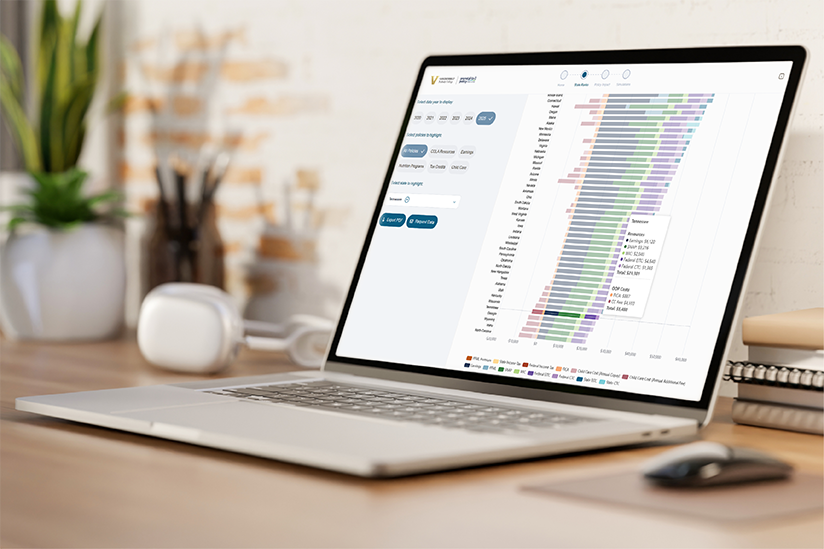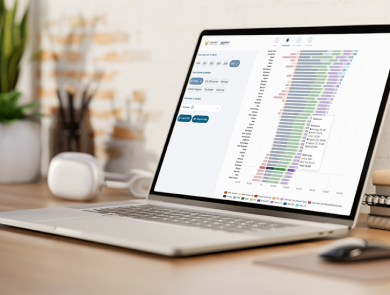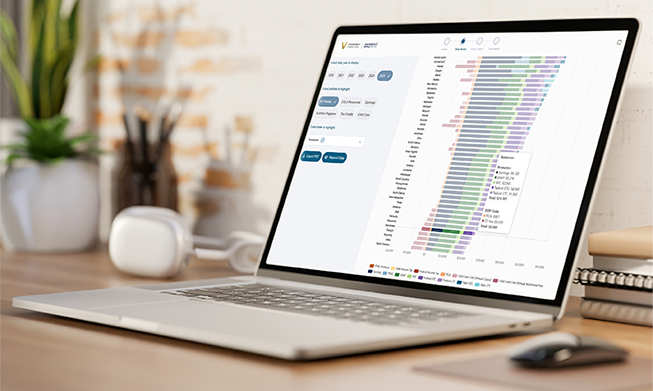The early child care workforce is a critical component of North Texas education and economic systems. Explore key challenges and opportunities to enhance the state’s early learning system.
Explore where states stand, track progress on proven policies, and identify opportunities to strengthen early childhood systems.
The interactive Policy Impact Calculator shows how state policy choices affect resources for families with young children. Compare states, track trends, and simulate outcomes.
No two states govern early childhood the same way. Explore a state-by-state look at early childhood governance, showing how programs are administered and which agencies oversee them.
The interactive Policy Impact Calculator shows how state policy choices affect resources for families with young children. Compare states, track trends, and simulate outcomes.
How do you know if a state policy truly improves outcomes for infants, toddlers, and their families? We reviewed thousands of research studies for you.
We conduct original research—including program evaluation, policy analyses, benefit-cost analyses, and mixed methods studies—to build the evidence.
To support lawmakers and advocates, we offer research and evaluation, data and analyses, presentations, testimony, agenda development, and more.
We aim to accelerate states’ implementation of evidence-based policies that help all children thrive from the start.
Who We Are
We are a nonpartisan research center at Vanderbilt University. We focus on the rigorous evidence connecting brain science with state policies and programs.
What We Do
We inform lawmakers, agencies, advocates, and academics about policies to help families thrive–while growing states’ health, safety, and prosperity.
Why prenatal to 3?
The first three years of life have a powerful impact on the future wellbeing of every person. Families can benefit from a strong early childhood system of care.
The Latest
Many expectant parents share a similar experience of being overwhelmed during one of life’s most transformative periods. Identified as one of several effective policies that can impact a state’s prenatal-to-3 system of care in our
Paid family and medical leave policies are proven to strengthen families’ economic security, support the health and wellbeing of children and parents, and improve mothers’ labor force participation, among other benefits. In partnership with the
High-quality and reliable child care is a vital resource for families and communities, often determining parents’ ability to work or pursue education or training—all avenues that could help them provide for their families. However, the
State earned income tax credits (EITCs) provide financial support to low and moderate-income families, offering relief that can reduce poverty and improve economic stability. Research shows that access to supports such as EITCs can lead
The Policy Impact Calculator compares the level of resources available to a full-time working family across states. This interactive tool offers a self-guided tour of the substantial variation in state policy choices for working families
Early childhood educators are vital to shaping the development of young children, but despite the significant responsibility of nurturing young learners, many educators earn wages that fall far below a living wage. In this brief,














